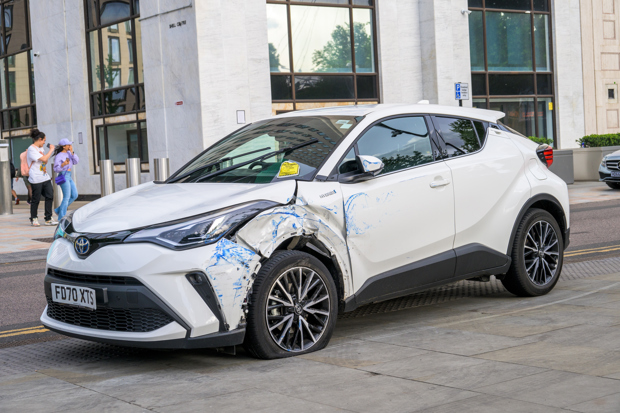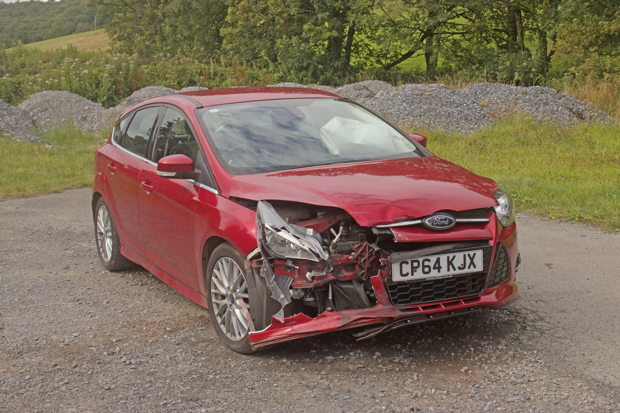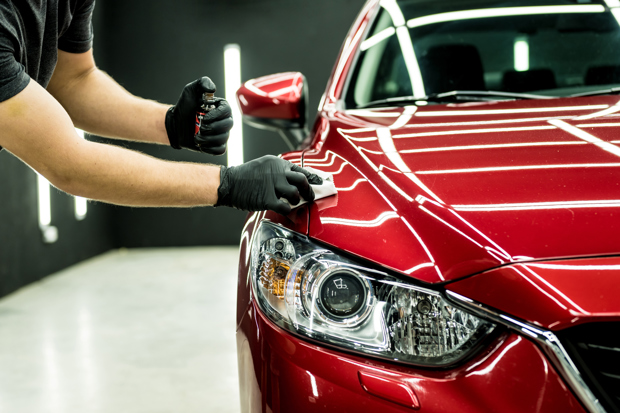What is a Cat N car?
If you're buying a car and see Cat N or Category N on a for sale advert, you may wonder why. So what does Cat N and is it safe to buy a Cat N car?

- We explain Cat N meaning
- Find out how Cat N differs to Cat S
- Why buying a Cat N can turn out to be expensive
You will often see used cars for sale that are marked as Cat N, Cat S or Cat C, usually priced far lower than normal. That's because they have at some point been written off by an insurance company.
A Cat N car is one that has sustained a reasonable amount of damage, but not to its chassis or structural frame – although this will vary based on the age of the car. If a newer model is deemed Cat N, it will have incurred more damage than an older one.
If you have a cheap car, it can be written off for something as trivial as a bumper scuff or broken lamp. On higher value cars, the damage will be more significant – one or more dented panels or substantial paint or glass damage, for example.
Old cars that are worth less than around £3000 are often written off instantly, as it will cost at least half that to process the claim.
Cat N can also apply to other forms of non-structural harm, such as a small fire or flood damage.
What does Cat N stand for?
The ‘N’ stands for ‘Non-structural’. This means that although the car has been damaged beyond economical repair, the main structure – the body shell, floor, chassis legs, roof and crossmembers – isn’t compromised and it can be safely repaired.
Car been written off? Looking for a replacement?
If your car has been written off and you're looking to buy a replacement we can help. We list more than 60,000 new and used cars for sale priced from £1000 upwards covering everything from small runabouts to big SUVs.
What are the other insurance write-off categories?
Category A: Car may not be repaired and must be scrapped in its entirety.
Category B: Car may have its usable parts recycled, but it also must be crushed.
Category S: A vehicle that has suffered structural damage, but is still deemed to be repairable.

Is a Cat N car worth buying?
In most cases buying a Cat N car is safe, but you should still exercise caution and ensure that any repairs have been properly carried out. It may not have incurred structural damage to the body, but a Cat N could still have incurred damage to suspension or steering components and it’s important to check these have been properly repaired.
You should be extremely vigilant and perform several checks to make sure it’s safe. At the very least, put the car through an MoT test at a garage independent from the dealer selling it.
The majority of issues that would make the car unsafe to drive would be identified during an MoT, so you’d hope that anything untoward would be flagged. Also check for residual damage to items such as the radiator, which is in a vulnerable position for a front-end impact.
Is a Cat N car cheaper than a non-write-off?
Category N cars are worth notably less than unrecorded ones and are harder to sell, so a repaired write-off isn’t always the bargain it appears – it depends what you plan to do with it and how long you want to keep it for.
While it may be cheaper to buy, it also has to be priced low to sell when you’re finished with it. That said, with cheaper cars that you wish to run into the ground, it’s less of an issue.
How do I know how badly a Cat N car was damaged?
There is no hard and fast way of knowing, but with Cat N you at least know the damage wasn’t deemed structural by a qualified assessor.
The date at which a car was written off is recorded on the V5C registration document and from that you’ll be able to work out how old it was when it was a total loss. If it was fairly new at the time, it’s likely to have sustained more severe damage than if it was an older model.
Will a Cat N classification affect the value of a car?
Once repaired, the car’s salvage category is recorded on the V5C and remains with it for life, which reduces its appeal for many drivers and makes it worth less when it comes to sell it on, too.
However, it also means there are some huge bargains about and many skilled repairers will buy Category N cars from salvage auctions and fix them up. The key is understanding the condition of the car and the quality of repairs.
The categorisation can also reduce your chances of selling the car, as many buyers will choose to avoid buying a Cat N car.

Is Cat N better than Cat S?
First, we need to consider all of the classifications. There are four categories of write-off: A, B, S and N. These replaced the old system that included Categories C and D.
A Category S vehicle is considered structurally compromised but possible to fix, while a Category N classification means the vehicle has no actual structural damage and is suitable for repair.
Category S means a car is still repairable by a qualified body specialist, but has sustained damage to one or more parts of its main structure.
Is a Cat N car more expensive to insure?
Insurers base their quotes on risk and while a Category S car presents a higher risk than cars that are guaranteed to be structurally sound, a Category N one is less of a concern. It may be marginally more expensive to insure, but not massively.
Will Cat N affect my insurance?
The Cat N categorisation can affect the cost of insurance and is likely to reduce the amount you can sell the car for in future, or claim for should it be damaged again.
Could I buy a Cat N car without realising it?
This is unlikely, but not impossible. The law is very strict on regulations for selling a Cat N car through the motor trade. Important information about its status cannot be concealed from you by a dealer – and that’s the law.
Check the paperwork thoroughly and if you have any suspicions, check its history with a vehicle information company such as HPI.
You’re at a much greater risk when buying privately, as when an owner retains salvage rights, they don’t need to surrender the V5C registration document to the insurer. As such, information about it being previously written off isn’t always recorded on the documentation.
It’s imperative that you carry out a data check on any privately purchased car, as your rights as a consumer are not as clearcut as when buying from a dealer.
What does ‘total loss’ mean in insurance terms?
When an insurer deems a car to be a ‘total loss’ it is essentially what you might know as an insurance write-off. The cost of repair and associated fees such as car hire, damages, recovery and admin fees is higher than the car’s resale value.
If the cost of any repair work is greater than half your vehicle’s total value, there’s a very good chance it will be written off, especially with older models. The additional costs of admin and hire car expenses often lead to insurers settling claims quickly. Category N can mean anything from substantial panel damage requiring repair and replacement to minor scuffs and scrapes on lower value cars, which are often written off without even being inspected by an assessor.
Who repairs Cat N cars?
Most Cat N cars are sold via auction and are bought by independent body shops with the equipment required to repair them. Because the cars cannot be sold for the same prices as those not recorded as write-offs, they can buy them for a lower price than undamaged cars. If you do wish to buy one, you should purchase from a registered repairer with the Vehicle Body Repair Association (VBRA).
That said, a lot of Cat N cars are sold privately by their owners, who negotiated ‘salvage rights’ with the insurer and were able to buy and repair the car themselves, or continue using it with minor damage.
In such a circumstance, find out as much as you can from the seller in advance. Some Cat N cars are never repaired, the owner choosing to live with cosmetic damage that doesn’t affect the car’s use.
What is a car’s structure?
The car’s structure is defined by the Association of British Insurers (ABI), one of the organisations behind the salvage code, and covers any structural part requiring realignment to its original dimensions or replacement. A car’s structure comprises the front bulkhead, front and side chassis rails, rear crossmembers, inner wings, wing supports, A and B-pillars and sills.
Cat N cars have been independently determined not to have incurred damage in these areas, but suspension arms and steering components are not classed as structural, so it’s imperative that these are properly inspected.
